This report highlights the top 20 tasks that have the highest weighted average working time. This time takes into account the calendar associated with the process concerned.
The objective is to highlight the tasks that create the most bottlenecks in the execution of the processes. This report helps you identify tasks and processes that can be improved.
This report allows a comparison of segmentations. You can select up to 4 segmentations. The management of segmentations makes it possible to compare or highlight desired processes.
The periodic filter considers work item tasks:
- If you choose the “Started on” option, the selection will then be made on all the tasks that started in the selected period and that correspond to the chosen segmentation.
- If you choose the “Completed on” option, the selection will then be made on all the tasks which have been completed in the selected period and which correspond to the chosen segmentation.
The weighted average is calculated as follows: average of the working time of the task concerned (taking into account the calendar when it is configured) / sum of the number of tasks executed in the segmentation.
Example: The segmentation includes 3 tasks: A, B and C. Task A was executed 5 times for an average time of 10 seconds, task B 7 times for an average time of 20 seconds and task C 2 times with an average time of 30 seconds.
The weighted average of task A is: 10 / (5+7+2) = 1.10.
For information: this average takes into account only the completed tasks, it does not take into account the tasks which are in progress.
The chart orders this indicator in descending order, highlighting the tasks with the highest weighted average execution time.
It is important to choose the segmentation of this report carefully to be able to highlight the tasks or processes that require significant analysis.
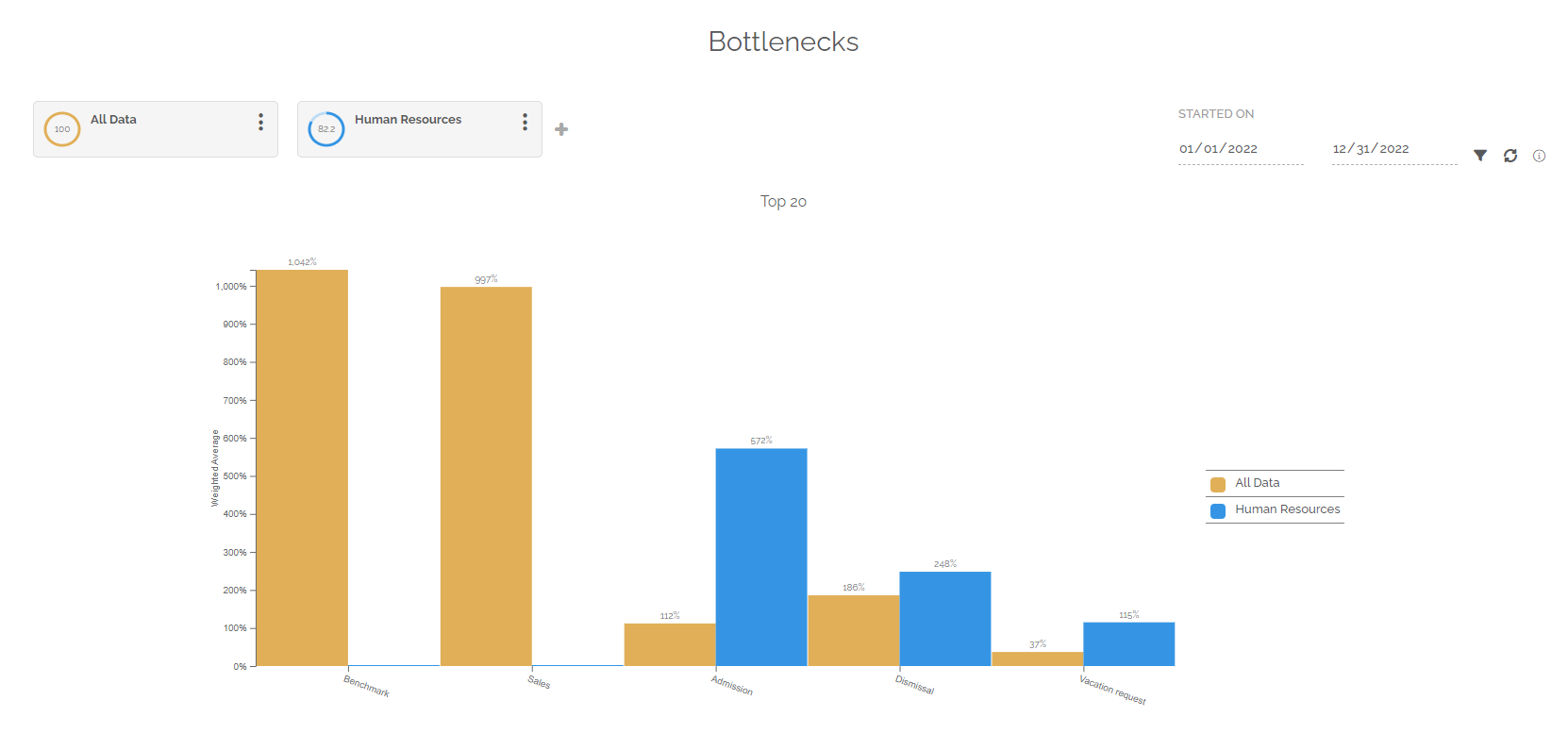
The table in this report contains the following information:
- The name of the task concerned.
- The name of the process concerned.
- The version of the process, this concept makes it possible to evaluate the effectiveness of process upgrades.
- The process owner.
- The average working time of the task. This time takes into account the associated calendar. This average is for completed tasks only.
- The number of tasks completed.
- The weighted average. The calculation of this average has been seen previously.
For information: the table is not limited in terms of display, unlike the graph. The table displays all the data corresponding to the selection of segmentation and periods.
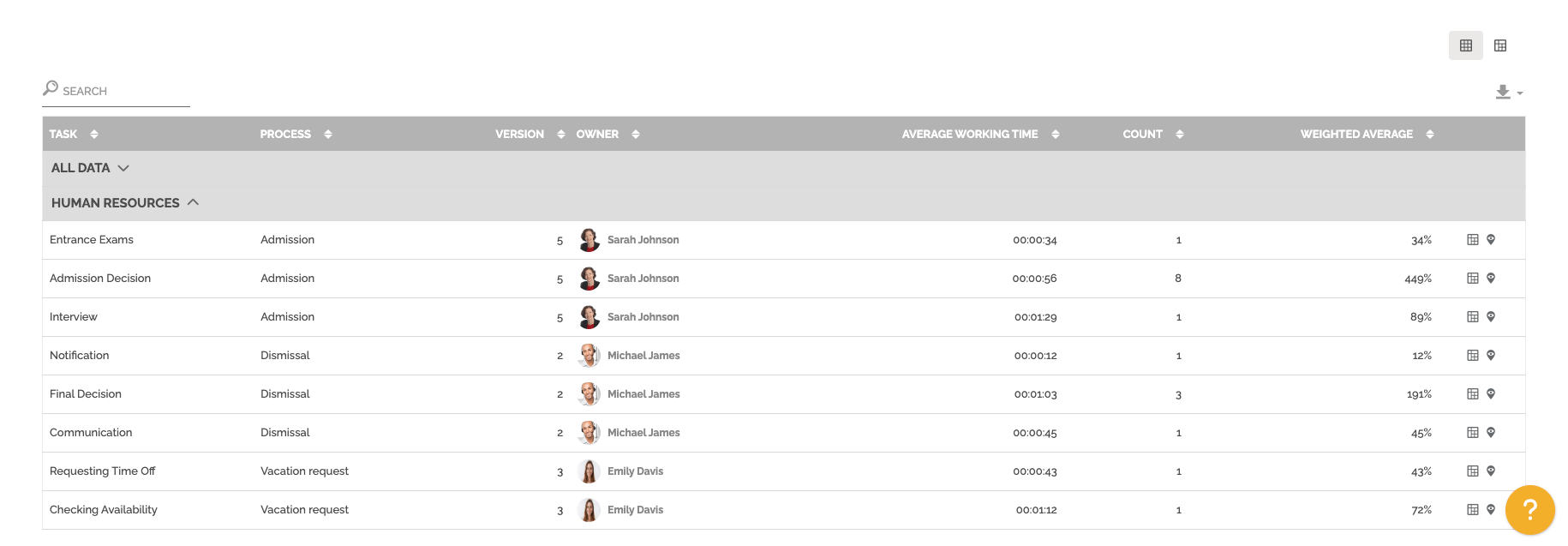
You can change view to have a pivot table by clicking on this icon:
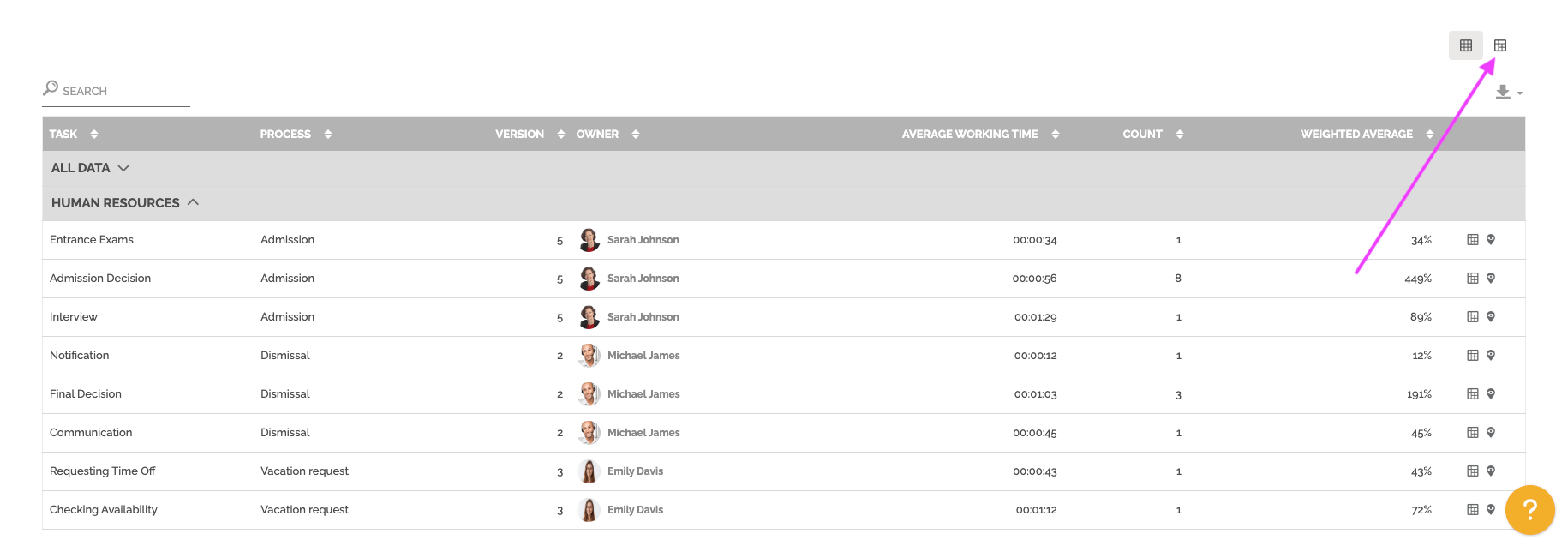
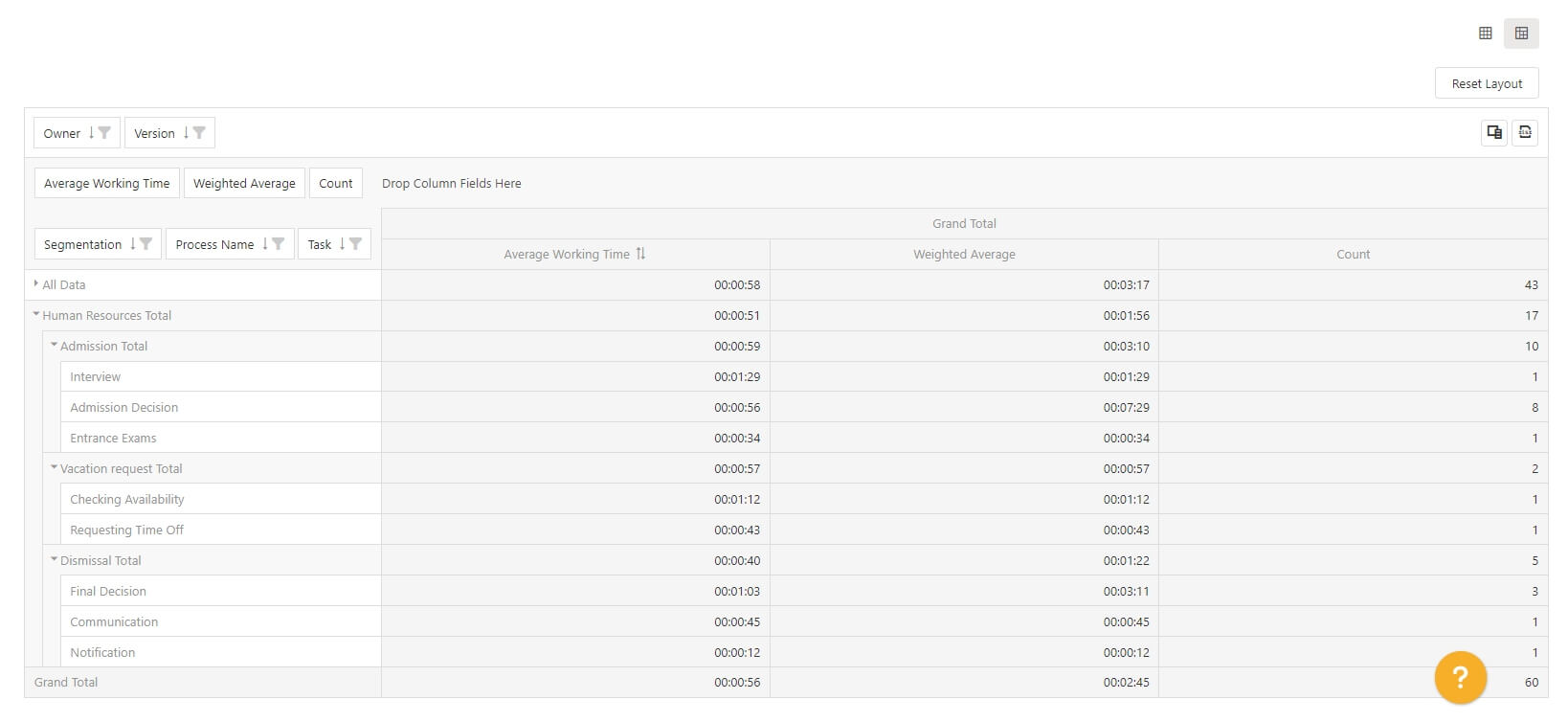
You can also display a pre-configured pivot table with one row results. The objective is to access this vision with the result displayed and then change certain parameters to deepen the result of a particular line.
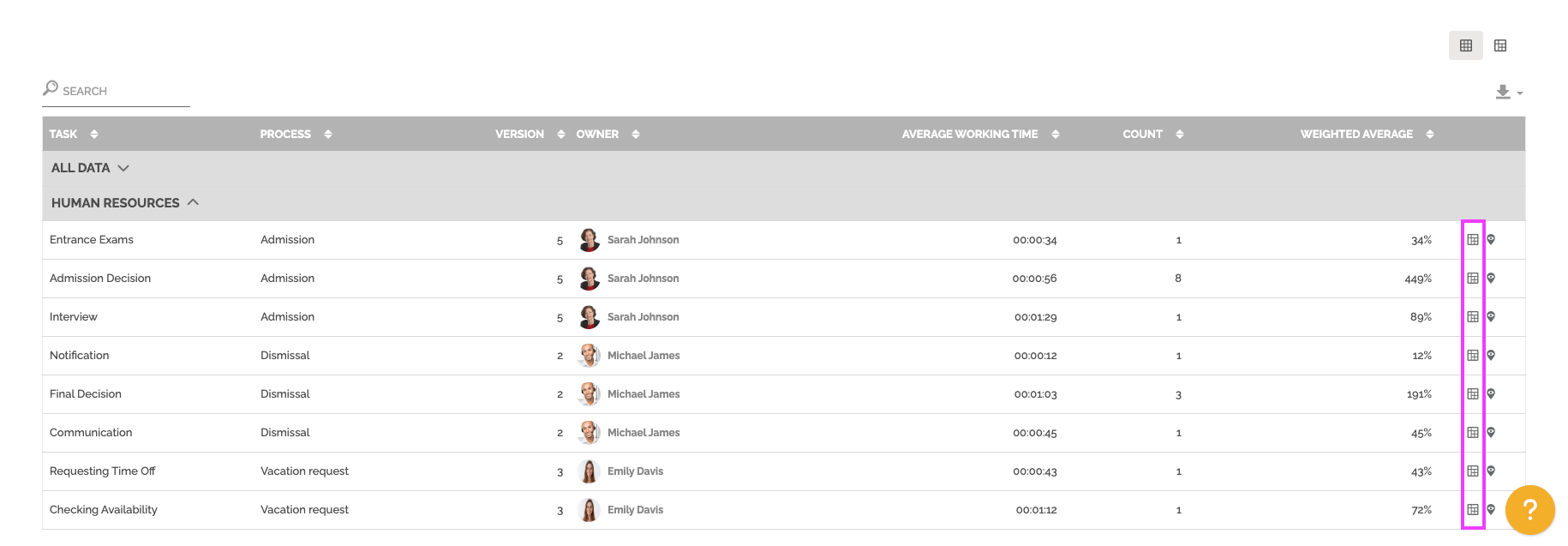
To learn more about this type of table: See the section “Pivot grid” in Analytics.
You can also access your process heatmap by clicking this icon:
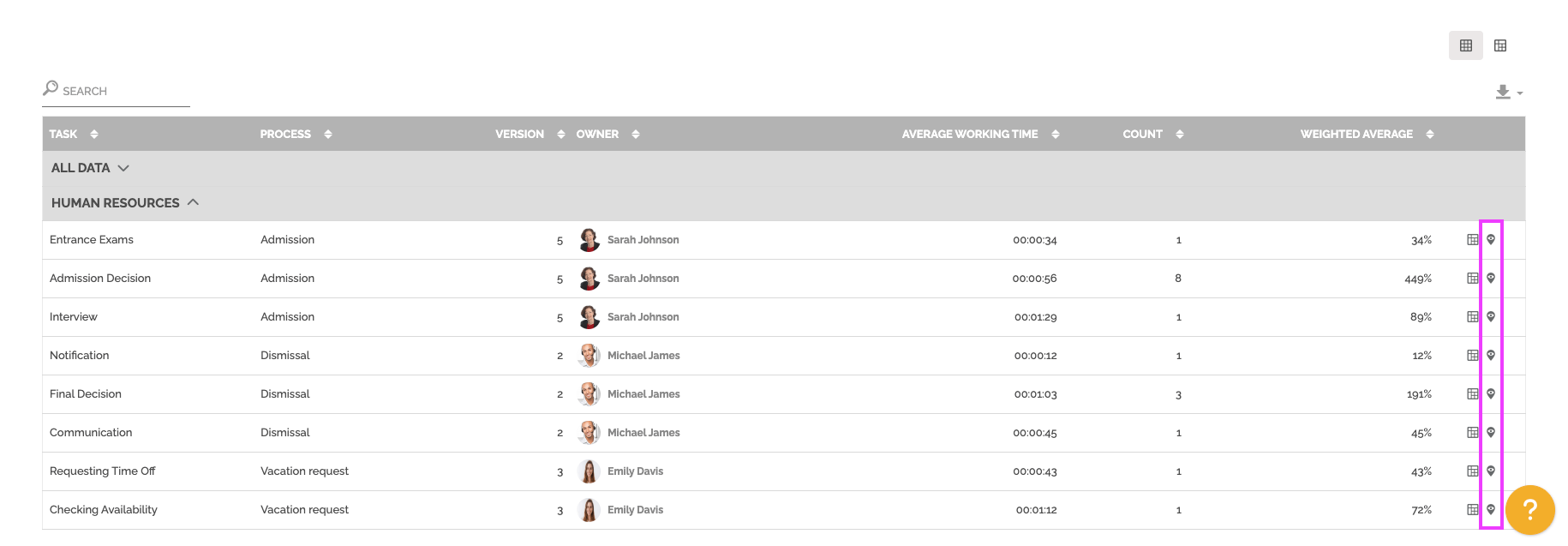
This feature highlights the bottlenecks of the process concerned.
To learn more about this feature: Heatmaps.
